#with little to new reference my anime drawing style comes through
Explore tagged Tumblr posts
Note
So, what was the first time like between the two?
Was anyone embarrassed or something?
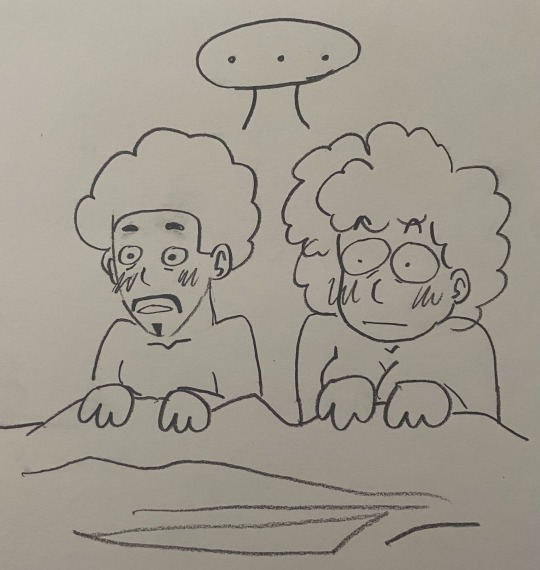
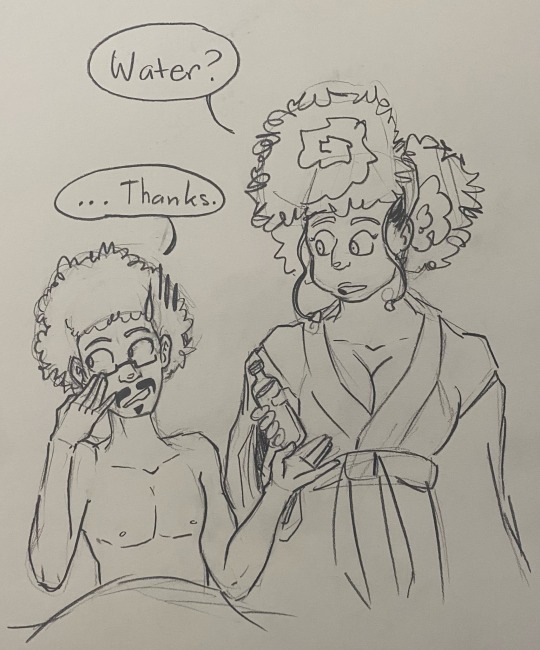
Yeah you can say that
5 notes
·
View notes
Note
I'm honestly amazed by how well you can imitate the LO S3 art style! Have you always been good at this sort of thing or is it a skill you developed due to your work as a tattoo artist?
ahhh thank you, but ima let you in on a little trade secret -
it's literally just referencing LMAO which is a valuable skillset to have! but one that I think a lot of folks tend to overlook because they think "learning to draw" means "I need to be able to draw everything perfectly from imagination!" Which sure, learning how to draw things without needing references might be cool, but it's ultimately not the sole defining feature of a "good artist" and I think there's frankly way too much emphasis put on "drawing without references" these days because it creates this unrealistic expectation of what an artist is. Referencing is part of the process! It's important! And it's a valuable skill to have so that you can actually grow your skills beyond your own limits! Referencing is as important to the process of creating art as research is to the process of writing, you can only produce so much new stuff if you're not taking in new stuff alongside it.
Though I use this skill a lot in tattooing as well, it's mostly rooted in my animation schooling which broke me out of the habit of drawing purely from imagination and taught me how to properly reference other material for educational purposes.
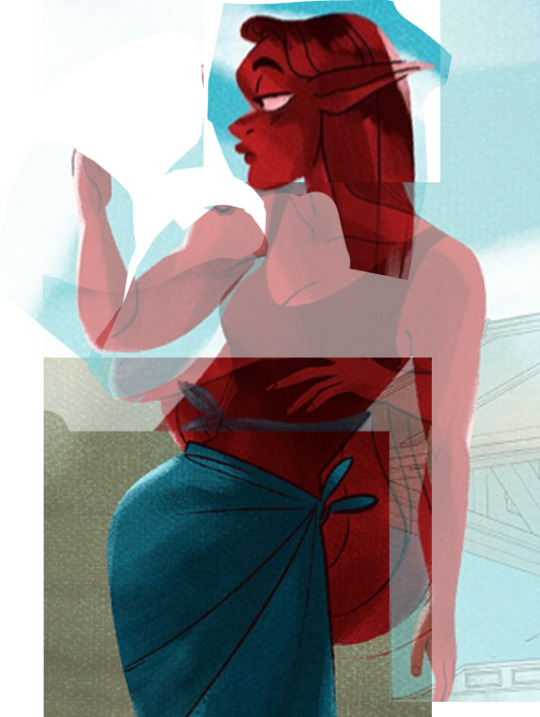
And I'm sure there are people in audience right now gasping at the fact that I simply cropped a bunch of different shots of Minthe from S3 and rearranged them like some surgical madman playing with body parts-
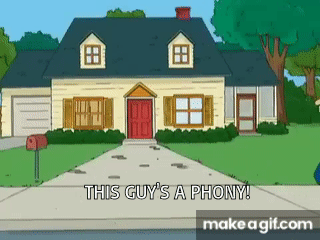
-but this is like, the actual majority of the process when it comes to learning other art styles and this process is taught as a skill in a lot of art schools because it forces you to draw what's there rather than what you think is there. This is the basis of master studies, to learn the techniques of other artists by trying to mimic them as closely as possible. Don't know what tools that artist used specifically? Try to recreate the work anyways with your best guess. Even if you only get close but not perfect, you'll still likely learn a lot along the way and may even develop some brand NEW techniques that weren't present in the original work you're studying from.
Imagination is necessary to the creative process, but it's only part of that process, you can't suddenly learn how to draw the way other artists draw through imagination alone because your imagination is limited purely by your own lived experiences. Our brains don't come pre-installed with these skills, they can't just magically unlock the capability to "do the thing". Just like how we have to learn to follow recipes as a means to becoming a baker or learn to read the alphabet to learn how to read and write, we have to learn how to draw what we see and reference the material around us if we truly want to expand our own innermost knowledge which will allow us to draw from imagination.
Here are some other examples of studies I've done, such as my attempts to learn the art style of The Doctor Foxglove Show:
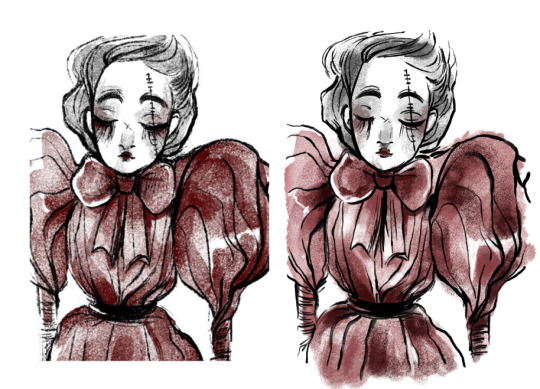
As well as a background study from S1 of LO:
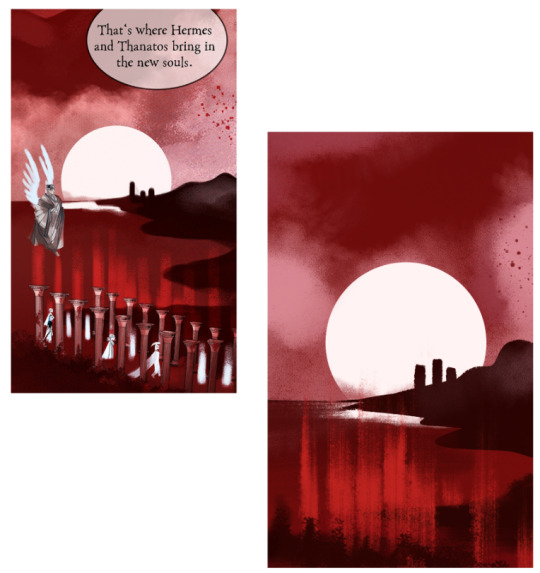
And of course here are a handful of the shitloads of studies I've done to try and "figure out" how to draw Hades and Persephone from S1 of LO:
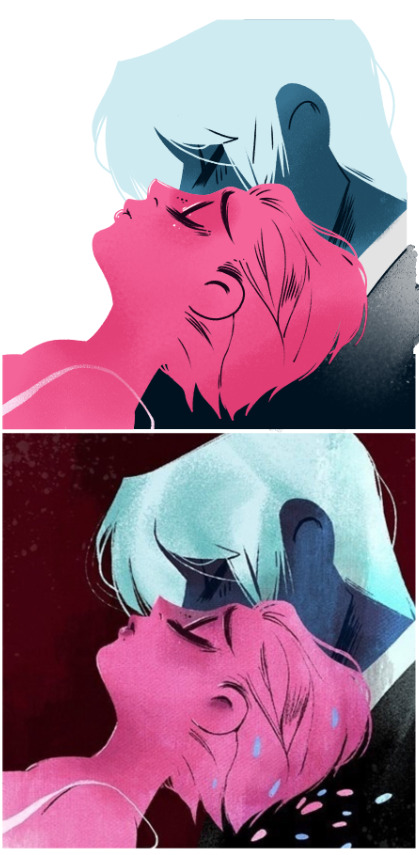
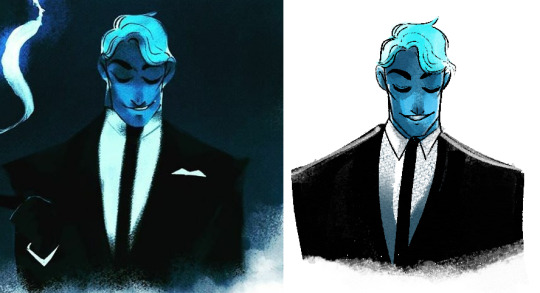
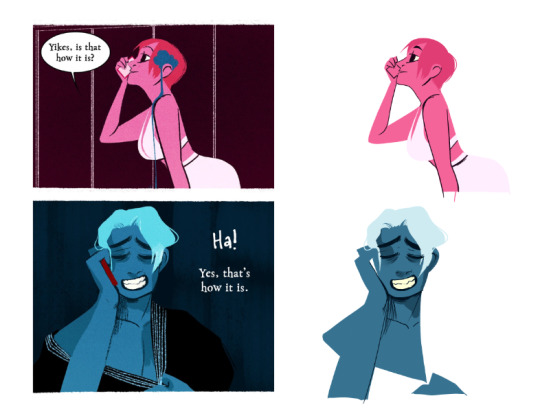
Aaaand just for the fun of it, here are some completely non-LO studies, like the ones I did of Kazuma Koda's background work and Akihiko Yoshida's character designs for Nier: Automata:
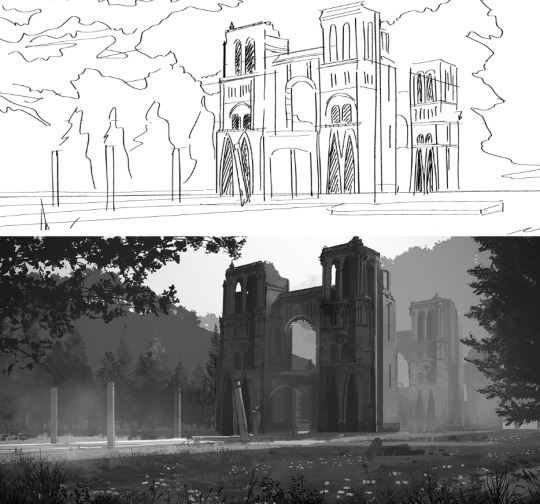
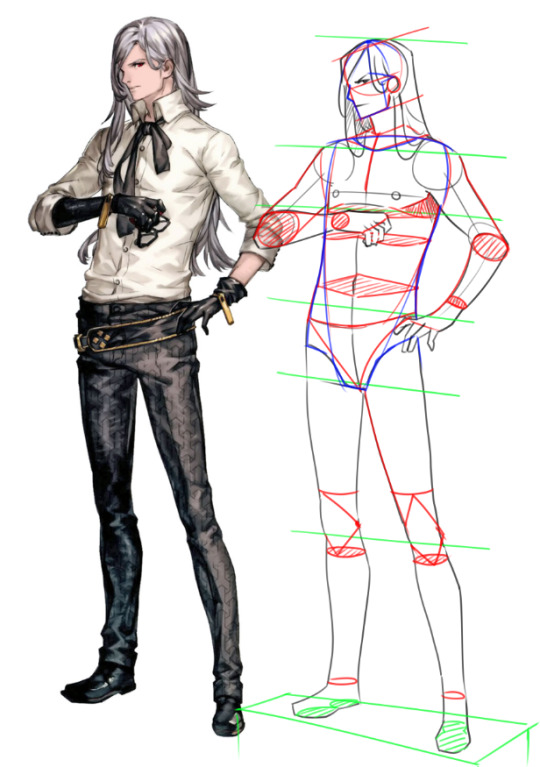
And this sorta rotoscoped ??? animatic of Mitsuhiro doing the opening jig for Still Feel by Half Alive which is 100% not done and probably never will be LOL
I'm always progressively doing studies of both LO and other media in this way so that I can update my knowledge and continue to improve my skillset.
Though, despite my best efforts to mimic the original creator's style, works like Rekindled will always have my own stylizations present, as that's just an inevitable consequence of it being made by myself and Banshriek (and the fact that we just refuse to draw worse to look more like LO because jfc so much of LO's original art, even the stuff we love, is rooted in Rachel's trial and errors lmao), but that's a feature, not a bug :') <3
So the answer is yes, the Minthe S3 redraw was done through skills I developed over time, though not necessarily through tattooing, simply through learning how to actually practice properly beyond "drawing a lot". And you can too! Draw lots, but also remember that your brain isn't naturally just going to "get better" at whatever you're trying to achieve just because you really want to achieve it. I try to avoid the mantra of "just practice" because it oversimplifies what's truly necessary to learning - having something to learn from outside of your own imagination. If you don't learn how to practice properly, then you'll just wind up repeating the same mistakes and reinforcing the same bad habits over and over again.
All that's to say, if you want to learn how to draw like a certain artist, try and recreate their art for yourself ;0 (but like also please for the love of god remember that it's for EDUCATIONAL PURPOSES, I shouldn't have to tell y'all not to copy directly off other artists' work for your own because that's just deadass stealing lmao) I know this enters the ethical dilemma of tracing, and whether or not it's a "valid" way to learn, but there's a lot of virtue in learning through referencing other artists and building new skills through them. I'm sure folks will argue that it's a 'crutch' or 'training wheels', but that's all often being touted from the perspective that crutches and training wheels... are automatically bad things and aren't meant to help people ?
Like obviously if you want to create your own thing that isn't purely "living in the shadow" of the works that inspired you, you WILL have to make that leap into the unknown. But that leap's a lot less scary to make when you have a parachute.
#sorry this turned into a long art advice post LMAO#but i hope it's helpful!#ask me anything#ama#anon ama#anon ask me anything
95 notes
·
View notes
Text
Processing Process, and More Processing
I made this post free and publicly readable on Patreon, but I'm reposting the whole thing right here too because, well, it's a free post, and I don't want to make you click away from your dashboard if you don't need to. But also if you want to support my work, here's the link to the post.
It's a little bit about cartooning, a little bit about drawing, and then it turns into a eulogy for a chicken.
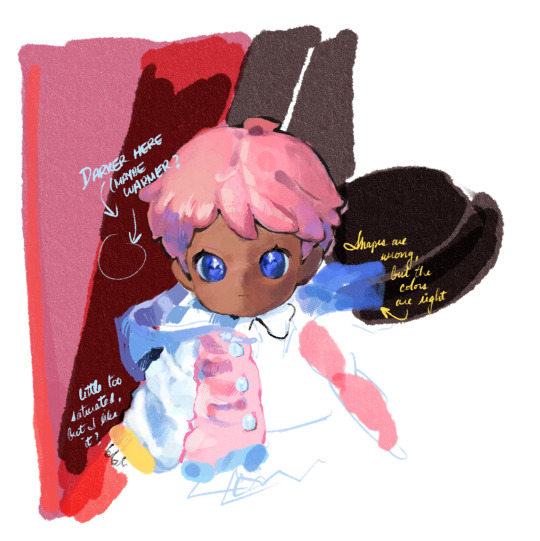
I wrote “process” more than once, and now the word looks funny and is beginning to lose its meaning to me.
This post is about a few things, and it’s a little bit on the sad end of things. Nothing dire! No worries. There’s just a little mention of death, just as a heads up.
Before we get to that, though, I’ve been doing some work and had some thoughts.
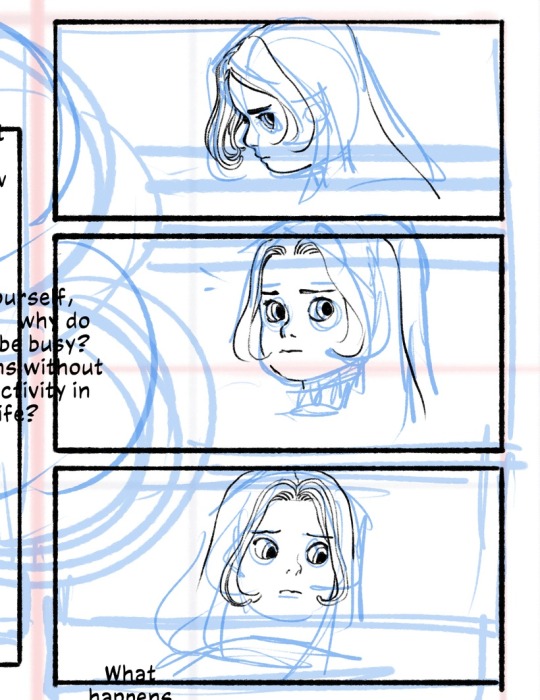
I’m often asked about how I draw the noodle hair on my characters, and the answer is typically that I draw each and every line with my hand. But there are considerations of movement and volume that go into it beyond its texturally decorative purposes. I love being able to convey shape and motion with it. It’s less evident, I think, in my illustration work, but I think it’s much more obvious when I do sequential work. In the above image, you can see me working out a sequence of Angelica having a series of thoughts. Her head sort of moves, and her eyes follow. You can see I’d planned out the general shape of the hair and how I’d like it to move.
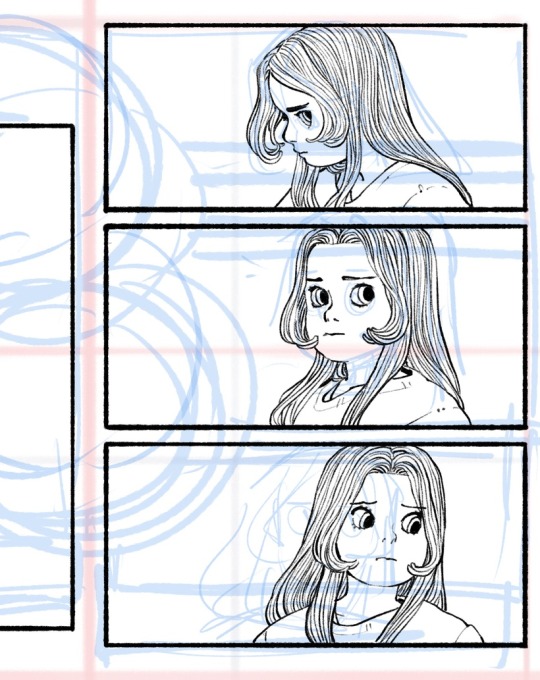
I wound up moving the drawings a little bit so that the readers eyes will actually follow the character’s eyes as it moves gently rightward on the page. The hair is there to accentuate the movement, like so:
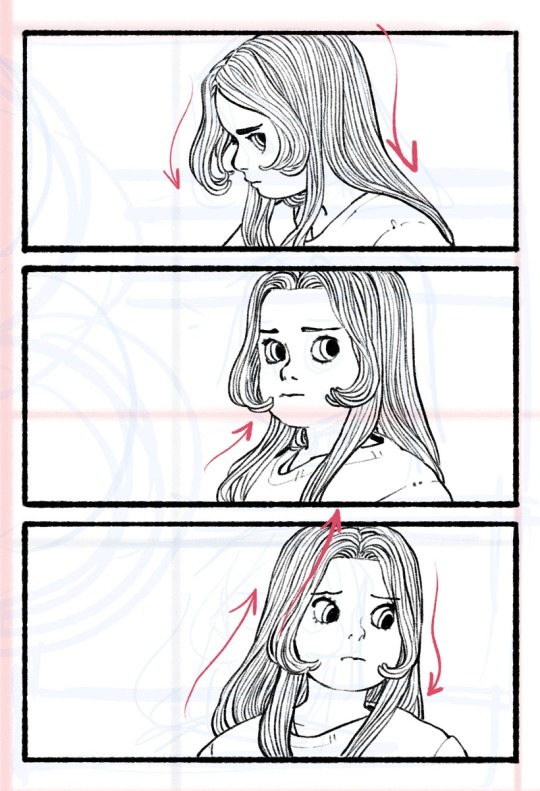
It’s a consideration I employ in all my drawings, but especially when I’m drawing hair and fabric. I don’t use a lot of action lines, so this becomes an important way to give the reader the information that someone is moving through a space. Resistance, gravity, and motion are all things I have to keep in the back of my head when I’m doing these little drawings. I think the planning actually takes more time than the inking, which can happen pretty quickly once I map it all out.
In other news, I’m starting to take my extracurricular artistic development a little more seriously in the silliest way possible.
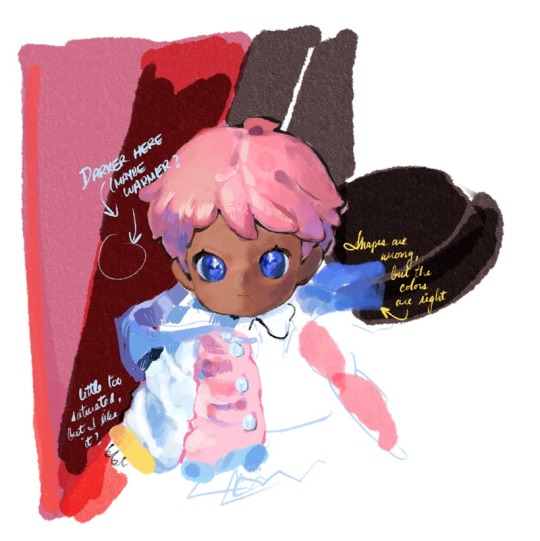
You wouldn’t know it, but I studied painting college—a medium I switched to after the printmaking professor and head of the Art Department at the time told me I probably shouldn’t be an artist (he gave me a hard candy for my trouble). I recently bought a bunch of little dolls, dressed them up, and am returning to my painting roots. It feels really nice to work in big blobs of color instead of lines. It’s an exercise I came up with in response to a common lament from art students.
One of the more aggravating generational tensions described to me by art school students is when professors describe a student’s portfolio as “too anime” without much explanation. I know what the professor means. They’re trying to get at how referencing your favorite anime or cartoons means that your style becomes a simulacrum, an imperfect copy of a copy, and you never learn to develop your own sense of judgment about where a line or a shape needs to go. And we can tell. It’s a way of working that is perfectly fine for cartooning because cartooning is closer to hand-writing than it is to drawing. I always turn to Charles Schulz’s work for an example. Those figures aren’t literally depicting children—with their little chessboard-pawn proportions and bread-loaf feet—but we read them as endearing children because we’ve come to a consensus between us, the readers, and Charles Schulz, the author, that those shapes mean those things. There are no whiskers or paws in the shape of the word “CAT” but you look at those three letters together, and you know the thing to which it refers. That’s an aspect of cartooning, too. Of course, what elevates it from mere writing is, in part, due to the fact that those little figures do not lose their meaning the more you depict them.
To really draw well, though, you have to do those fundamentals. You have to draw from life. There’s no way around it. It helps you develop a stronger sense of where you like to lay down your lines and shapes, no matter how stylized you like to work. It grows your judgment, and every artist’s best tool is their own well-honed sense of artistic discernment about their own work.
But that doesn’t mean you have to surrender the stuff you like or the things that inspire you to make art! I tell students that if they want to hold fast to their anime style AND hone their fundamentals to develop their eye as an artist, they should buy little figurines and toys of their favorite characters, prop those up against a light source, and draw them as still life objects. Like, yes, do the vases and the figure drawings and all those, I still think those are important. But if this is what you need to keep you interested in drawing from life, having some toys around is a great way to do it! Also, bless those sculptors and toy designers. They’re the best.
I think there’s something to be said about remembering to imagine the physicality of the things we draw, in all its dimensions and in the way it catches the light or casts a shadow. It helps sentimentalize things, too. Makes them feel more real, even emotionally.

Edwina died on Tuesday night, after a few final snuggles, surrounded by her favorite treats. She was about five years old, which is old for a chicken, and she had a very comfortable life. We buried her this morning. She was a good hen, J’s personal favorite.
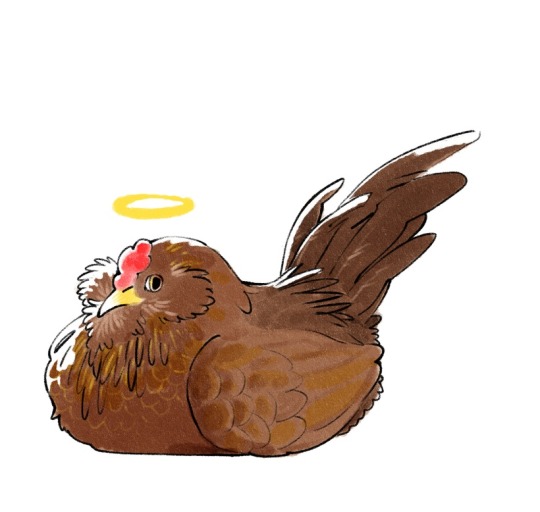
It really feels like the end of an era. She was the last surviving member of our very first flock. After the other hens died, she really seemed to prefer the company of people over other hens. She is survived by Snooki and Nelly, our two other young birds who get along quite well together, actually.
A baby chick costs between three and five American dollars, typically. An egg-laying hen could be between twenty and fifty bucks, depending on the breed. There are roughly 26 billion chickens living in the world today, about 518 million of them here in the United States. They come pretty cheap. And a part of me was moved to cynicism, entertaining the thought that it might be strange to feel sadly over a little animal that, at most, might be roughly equivalent to the price of a fancy lunch and a coffee.
I watched the 1974 musical version of The Little Prince recently, and I remember it mostly because Bob Fosse was in it and scared the crap out of me as a kid—he played the snake that would take the Little Prince back into the sky when his body gets too heavy to take with him. Gene Wilder plays the Fox whom the Little Prince befriends and tames among a garden of roses. The Fox explains that he is like any other fox in the world, but he is changed—made special and particular to the Little Prince—with time, effort, and patience. So, too, is the Prince’s little flower special to him. Out of all the flowers in the universe, she was the one he watered and protected under a little glass jar. And that’s enough.
I knew my little hen would not live that long. It could be very easy to take a broad view of the life expectancy of a hen and distance myself from it by virtue of its mortality and its commonness. People who raise livestock do it all the time. But I also think it’s wonderful that we should all be capable of loving very small, very brief little things. Edwina is not, to my mind, the rough equivalent of a fancy lunch and a coffee. She was our little hen. For her whole life, she was ours. And I’m so happy she was here.
108 notes
·
View notes
Text
First impressions on Champignon Witch
This manga isn't really magical girls, but there is a witch in it (duh) and no way I'm not gonna talk about it. I saw this in a compilation of anime that's coming out in 2025 and from the promo art alone I knew this was going to be my manga (from the mushroom witch hat with ornate decorations), and so far it has lived up to expectations.

The story is set in a fairytale style world, where the black witch Luna lives in her little mushroom house in a forest with her magic familiars, and makes various powerful medicine out of poisonous mushrooms. People fear and hate her because she emits poison, and even the few merchants who will do business with her and treat her in a friendly way wear protective items around her and will scrub clean everything she has touched after she leaves. Luna continues to create medicine for the townspeople though, because she has few other ways to feel connected to other people outside seeing everyone all happy about the anonymous source's cures, even if she knows that nobody would want them if they knew they came from the poison witch. Also unbeknownst to the normies the poison she radiates is actually beneficial, because she involuntarily sucks up this vague evil bad vibe energy around her, and turns it into a more manageable form.
The first volume or so is spent following Luna's life, and it isn't until later when she finds the turbo poisoned boy Lis, somewhat cures him and takes him as an apprentice that the main story actually starts. The council of the black witches wants to kill him, because it is speculated that his poisoning will eventually take over and he'll cause large scale ruination, and only allow a limited time for Luna to teach him to manage his own poison.
I like how the whole series has a rather somber tone, which mostly comes from the characters wanting and failing to be close to one another, and trying to make peace with having to give up on someone. Like Luna has lost several of her black witch friends to witch hunt executions. The story also has a difficult relationship with love, since love is "poisonous" to black witches and messes up their magic, and also Luna has to live in isolation anyway. But it doesn't seem like this is a "love conquers all" kind of romance, because it has a side character give a speech on how it's condescending of outsiders to think that life without love is somehow incomplete.
I really like Luna, aside from the lovely character design she also has sweet quiet personality and it's easy to root for her to get through her self esteem troubles. I also like that she is already an experienced witch at the start and not a newbie who is baffled by everything. I'd say my biggest complaint about the story is that lately it has been a lot more about characters other than Luna, I wish she'd come back to the spotlight soon!

Since Luna's character design is what drew me to this in the first place, I was extremely happy that she wears a lot of memorable "medieval fantasy" type outfits. Quite many of them in fact, she has a new one almost every chapter! And sometimes multiple in the same chapter! And you know how I often like to draw collections of animu outfits with the character standing there in a neutral pose, here the author has done my job for me because almost every chapter ends with a good reference image full body pics of the major characters' new clothes! Even the ones that only appear once on a cover! It's like this was made for me.
Finally it should be mentioned that eventually Lis falls in love with Luna; it's somewhat complicated how old he is because he keeps getting aged down by magic so he is chronologically older than how he looks (and so is Luna for that matter, this is a "magic people stop aging" kinda series), but if that's a dealbreaker to you then maybe steer clear.
23 notes
·
View notes
Text
From Cherry Blossoms to Giant Robots: How Anime and Japanese Culture Captivate the World
Imagine a world where cherry blossoms float through the air, where samurai honor codes meet futuristic technology, and where everyone, from a teenager in New York to a retiree in Paris, can find joy in animated tales of adventure, romance, and heroism. Welcome to the realm of anime and Japanese culture, a vibrant, dynamic force that has crossed borders and generations, leaving an indelible mark on global society.

The importance and growth of anime.
Anime, Japan's unique style of animation, isn't just cartoons it's a cultural phenomenon. From classics like "Astro Boy" and "Dragon Ball" to modern hits like "Attack on Titan" and "My Hero Academia," anime has a diverse range of genres that appeal to all ages. What makes anime so special? It's the blend of intricate storytelling, complex characters, and stunning visuals. These aren't just shows; they're experiences that pull you into their world.
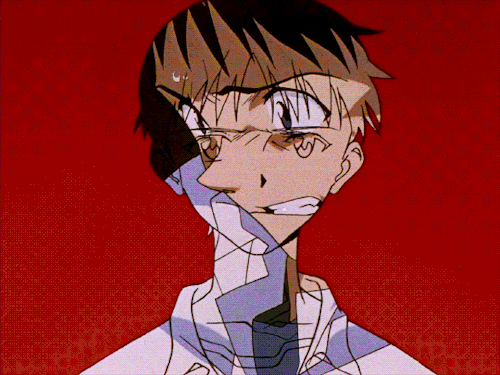
Anime is a gateway to Japanese culture. Through anime, viewers learn about traditional customs, festivals, and even cuisine. Think of "Spirited Away," where the protagonist, Chihiro, navigates a magical bathhouse filled with spirits a nod to Japan's rich folklore and Shinto beliefs. Or "Your Name," which beautifully portrays the rural-urban divide and the traditional practice of "musubi" (tying threads as a symbol of connection).
Global influence by connecting generations
Anime's influence stretches far beyond entertainment. It's a style, a vibe, a community. Fashion brands like Uniqlo and Gucci have launched anime-themed collections, while sports stars like Naomi Osaka openly express their love for anime characters. Moreover, the principles and aesthetics of anime have seeped into global pop culture, inspiring everything from Hollywood films to video games.
One of the most magical aspects of anime is its ability to bridge generational gaps. Parents and children can bond over shared favorites like "Pokémon" or "Studio Ghibli" films. For the older generation, anime offers a nostalgic trip back to their childhood while providing fresh stories that resonate with today's themes and issues.
Anime has created a global community of fans who gather at conventions, participate in cosplay, and engage in online discussions. Events like Anime Expo in Los Angeles or Comiket in Tokyo draw fans from all over the world, celebrating their love for this unique art form.

Fun Fact: The Origins of Cosplay
Did you know that cosplay (dressing up as characters from anime, manga, and video games) originated in Japan? The term "cosplay" comes from "costume play," and it has become a worldwide phenomenon. From local conventions to international events, cosplay is a testament to the creativity and dedication of anime fans.

Anime and Japanese culture are more than just entertainment they are a window into a different way of life, filled with beauty, tradition, and endless creativity. They remind us that, no matter where we are in the world, we can find common ground in the stories we love and the values they teach us. So, whether you're a seasoned otaku or a curious newcomer, dive into the world of anime. You might just find a new favorite story or even a new perspective on life.

Ready to start your anime journey? Check out classics like "Naruto" or "Sailor Moon," or dive into newer hits like "Demon Slayer" or "Jujutsu Kaisen." And if you're already a fan, share your favorite anime moments with someone new you never know whose life you might brighten with a little bit of anime magic.
Happy watching, and may your adventures be as epic as your favorite anime!

References.
Cavallaro, D. (2010). Anime and the visual novel: Narrative structure, design and play at the crossroads of animation and computer games. McFarland.
Condry, I. (2013). The soul of anime: Collaborative creativity and Japan's media success story. Duke University Press.
Napier, S. J. (2005). Anime from Akira to Howl's Moving Castle: Experiencing contemporary Japanese animation. Palgrave Macmillan.
Noppe, N. (2013). Fanning the flames of fandom: The commercialization and transformation of fan activities in the age of media mix. In M. Ito, D. Okabe, & I. Tsuji (Eds.), Fandom unbound: Otaku culture in a connected world (pp. 104-127). Yale University Press.
Steinberg, M. (2012). Anime's media mix: Franchising toys and characters in Japan. University of Minnesota Press.
21 notes
·
View notes
Text
answering asks vol 2.

'Smiths' can encompass enginesmiths (mercury), armoursmiths (mars), alchemists (saturn) and some others - generally a smith is someone who works with engines or metal in any capacity, whether by constructing them, managing their fuel, making armour, etc. all of them have a completely degendered role in the church. They are supposed to be wholly devoted to their craft & church, to the point of becoming almost unpeople, sexless.
-

I like pantera :) he's the main character beast sure (alongside leun) but he's got a lot of interesting history and has been through a lot.
To start out I do some basic sketches while looking at bestiary diagrams of the animal type. Then I draw the base proportions over a photo of the animal's skeleton. Once the joints are all in place and I could imagine it moving relatively freely, I pick a motif and design the armour shapes with that in mind (i.e leun's trefoils, taurus's waves). The motifs come from a bunch of sources - if I see them in medieval art around that animal, the beast's use purpose, the culture that built them and how it might differ in art styles to the 'basic' designs from the heart of the Mezian theocracy. Fun stuff like that.
As an exercise I have taken (human) characters from other settings and made holy beast versions of them, trying to imagine what animal it would be, what weapons, what armour designs, etc. Behold, Bowman:
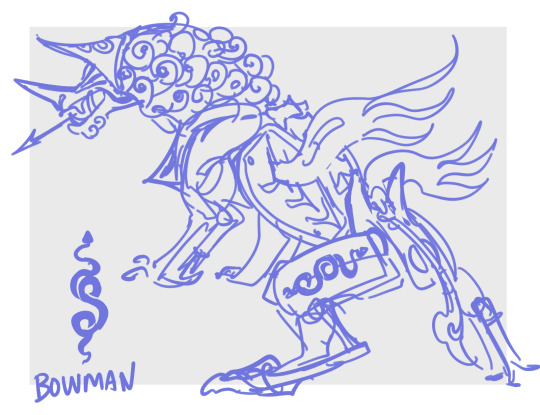
It's a fun exercise! I recommend :>
-

Hi! Thank you for the suggestion! I actually did try to use OneNote for my thesis but I found that it ended up an extra step that got in the way. Instead I organised my reference papers manually (and wrote up all my bibliography by hand as well). I haven't heard of Notion so I might look into it :> as someone with adhd I find that the best way for me is to make it stupid easy, which is why discord works because I already use it for talking with friends and I like the mobile app.
-
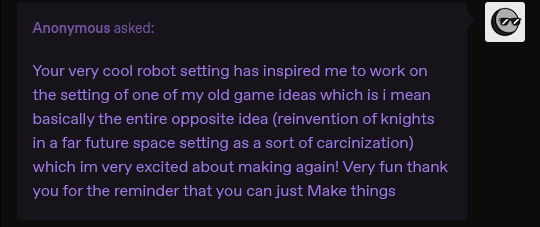
SO true!! You can make whatever the hell you want forever and that sounds really cool, I'm glad I was able to help in some little way >:) (although, holy beasts are not robots.. i think the best description for them is just. exotic vehicles.)
-


lmao it's totally fine!! I love to talk
Sir Heaven had such a profoundly negative experience with Leun that he struggles with the concept of making anybody else do what he now considers to be his burden. He also feels that taking any new people inside Leun would endanger them.
The bishop of Salvius cathedral is the guy Heaven answers to, and his superior officer. The bishop has reported the matter to the pope and they're still working hard presenting new potential novices to Sir Heaven, but the thing is that Sir Heaven rejects them for seemingly valid reasons. He doesn't just say 'no I'm not taking apprentices', he says 'this one's reaction speed isn't good enough' or 'this one is too prideful'. But the longer he tries to keep this up, the more suspicion he heaps on his shoulders. If the time came, no, he would not be able to deny a direct order from the pope.
Ketjan was selected at random, one of a large group of other children who were not raised in the church. This is to ensure that there is no per-existing bias or knowledge of how holy beasts work. And he just happened to be the only one of the group who could master Leun's very demanding dialogue tattoo. The recruiting enginesmiths, who designed Leun's systems, were the ones to train him, but Ketjan was the one to write most of the procedures for operating Leun based on feedback from the dialogue.
-
Replies from THIS post:

@ospreyonthemoon @kicks-tiktaalik-back-into-water
Krokodilos had an amazing high-tech ventilation system that used active air pumps to keep it circulating. But exactly like the second reply says, it broke down frequently. And because of how it worked, the interior of croc had to be air-tight so that the pumps could work efficiently. And, of course, if it broke down, and it was air tight on the inside, it instantly became a more dangerous deathtrap than your average passively ventilated beast.
There were valves that could be opened in an emergency but these were only added after the first Incident. The pumps would break down from the fabric seals degrading, lose efficacy, and then the parts furthest from the pumps would suddenly not get enough air anymore because air couldn't be moved such a distance with faulty pumps. The reason his enginesmiths want him to be re-commissioned is because the only barrier was the material used for the seals, and they believe they can innovate some new materials or try something different and have it work. They were even thinking of trying natural rubber, which would have worked perfectly, but they never got approval for it.
75 notes
·
View notes
Text
Using Tarot To Help You Write
Right ok, so I’ve wanted to do this for a bit - there are vague references to tarot in my story TRT and I’ve answered a few questions about how I use the RWS-style tarot to write but now I have a little bit of time while I wait for my laundry to dry. So let’s get into it.
If you’re looking for another tool in your writer’s kit, you could strongly consider adding a box of tarot cards to the bag. Set aside, for a minute, what you’ve heard about it. Set aside any spiritual aspect, telling the future, the ‘OoOOOooOOh evil’, or even the ‘DRAW DEATH MEANS DEATH’ you see in movies. Instead, strip it down to its base.
Tarot is about telling a story.
(Below: Oak, Ash, & Thorn Tarot)
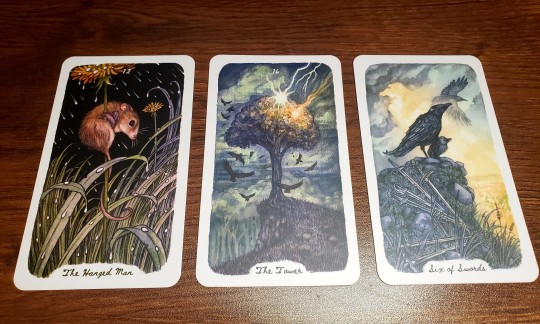
From a storytelling perspective, the first 18 cards of the RWS style tarot, known as the Major Arcana, essentially tell the Hero’s Journey as the Hero sets out on an adventure and searches for knowledge. There’s disaster, love, temptation, and wise people they meet along the way before eventually finding enlightenment at the end of their journey. The Major Arcana contains major archetypes and themes present through so many stories. When you add in the rest of the cards in the Minor Arcana - the other 56 cards, encompassing a variety of emotions, archetypes, figures, and various life events you might run into - you’ve got something perfect when you want to introduce new elements to your story. I keep a small deck on my desk and use it frequently when creating random OCs, plotlines, or problems for characters to solve.
And before you go, holy shit Pasta that’s a lot to take in, using tarot for your story doesn’t have to be complicated. You don’t need to have 20 years of tarot experiences, you don’t need to be an expert, you don’t need A Great Gift. You don’t have to know about tarot at all, really. You just need one thing:
The right storytelling deck.
More below the cut.
Look, there are a million styles out there, some that focus heavily on storytelling imagery and some that focus more on symbols; some that feature animals or nature, and some that focus on people. I generally lean towards animal-based decks since I’m more familiar with animal/nature imagery, body language, and symbolism, but in reality the best deck to use for writing is simply the one you’ll actually use. If you’re drawn to one, go for it. That being said, if you’re looking for something to use without needing to get into all the symbolism of each card, I generally recommend using a deck in which all cards, including the Minor Arcana, depict a scene you can examine - aka, one that plays up a story rather than a straight up symbol. Let me show you an example with three decks.
Left: Mystical Cats tarot; Middle: Oriens tarot; Right: Children of Litha tarot
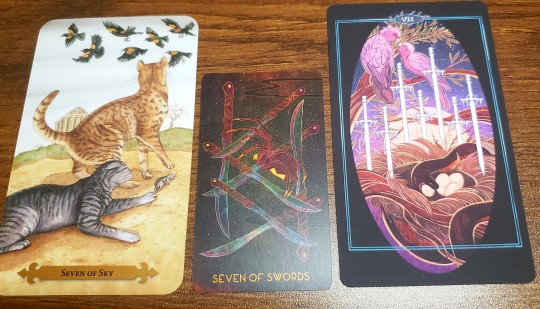
These all depict the same card: the Seven of Swords, meant to depict deceit, theft, betrayal, lies, and trickery. The middle card relies a little more heavily on symbolic meaning (the black widow spider, which ‘betrays’ when mating and uses a sticky web - symbolizing a potential trap), whereas the other two cards show an active scene (Card 1: OH NO HE’S GONNA STEAL YER MOUSE WHILE YOU’RE NOT LOOKING; Card 3: YOU LOVESTRUCK DIPSHITS, TURN AROUND, THE SNAKE’S EATING YOUR EGGS). I’ve found cards like Card 1 and Card 3 are faster and more convenient for storytelling, because you’re basically presented with a scenario/characters/a situation right off the bat, whereas a symbolic card is more open-ended and might require some digging unless you’re already fairly familiar with the symbolism. If you’re going to get a deck that depicts people instead, I recommend looking for a deck that’s diverse. Humans come in all shapes, sizes, and colors, and having a deck that reflects that (something like the Modern Witch tarot) is valuable for storytelling. So if you’re picking a deck to help you write, look for:
Decks that use scenes/storytelling imagery for all cards
Decks with imagery/body language you can easily read at a glance
If you’re looking for a deck with people - decks with a diverse range of body types, ethnicities, sexualities, and genders
A deck with imagery you actually like, otherwise you won’t want to use it
‘Ok, so let’s say I’ve found a deck, or I already have one. What does using tarot for fic even look like?’
Let’s do two quick readings for two writing scenarios you might use this for! This will also show you can be as complex or as simple as you need to be. These are also the two scenarios I use tarot for most when writing - character construction, and plotline construction. First I’ll use the Children of Litha tarot, which uses a moderate amount of storytelling imagery. Then I’ll use the Mystical Cats tarot, which is probably the most story-heavy deck I have, imagery-wise. That way, you can see how construction gets a bit easier depending on how scene-heavy a deck is.
Scenario: I need an original character for this chapter or scene! Quick, draw three cards!
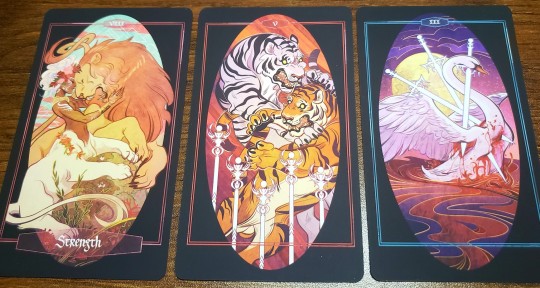
Quick reading: she’s very gentle but there are also two tigers inside her and one of them wants to kill you, especially if you fuck with her pet birds
More complex reading - Personality, Flaw, Backstory:
Card 1 - Personality: This character is someone who’s unafraid and bold in their kindness even when faced with danger, and they know when a gentle touch is needed. They believe strength is found not in being cruel or violent but in responding with love. This usually works out for them, to the point that even Scary People (TM) seek this character out, knowing they’ll find love and affection. Alternatively, this character is one half of the Brooding Rough One Loves The Gentle Soft One trope. Whatever works for you!
Card 2 - Flaw: Despite all that, the gentle character’s got a temper, and it exists in direct conflict to what they believe about strength, thus producing cognitive dissonance. This is someone who’ll dodge conflict to avoid showing their temper, but eventually that repression’s going to blow up into a real fight and it’ll be messy.
Card 3 - backstory: This temper and conflict avoidance is due to some tragic incident in their past that left them deeply wounded. It’s one reason they’re so gentle, but there’s a lot of lingering anger and trauma. These wounds are not healed, and if you look deep enough, you’re going to find blood.
Depending on how important this character is, you could add even more: a card for a strength, a card for a challenge they need to overcome to grow as a person, their family dynamic, etc. Again, you can make it as detailed or as simple as you need.
PASTA NOW I NEED A LITTLE PLOTLINE FOR CHARACTERS TO SOLVE. Quick, draw four!
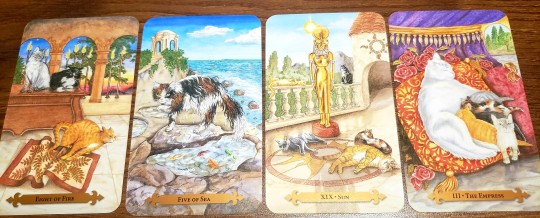
Quick reading: holy SHIT your characters gotta move fast, cause there’s a pissed off dude out there who wants revenge NOW and is ready to fuck up a *shuffles cards and draws* religious temple of peaceful cat loving monks, one of whom is the one that fucked up Angry Dude in the first place WHEN HE WAS A BABY WITH HIS MAMA, PLOT TWIST OH NO, IT’S PROBABLY THAT ASSHOLE STEVE IN THE BACK OF THE THIRD CARD, LOOK AT HIM LOOKING OFF INTO THE DISTANCE.
More complex reading - Theme, Problem, Setting, Solution:
Card 1 - Theme: As you can tell from our cat with zoomies, your protagonists are on a clock. The theme here is urgency, it’s speed. Things will start off with a bang and they won’t have much time to slow down. This’d be good for a one shot or a chapter.
Card 2 - Problem: look at that cat, they’re so ANGRY, they are PISSED, someone did them dirty and they’ve been stewing over it for a while. They can’t stop feeling that betrayal no matter how much they try to lick it off shake it off forget about it. They want REVENGE for what was done to them and they’re gonna cut someone up.
Card 3 - Setting: Ah, a peaceful, sunny place where everyone’s just chilling. Everyone’s happy. Maybe a religious place, say, a church or a convent or hell, a nudist retreat. Either way, no one knows what’s coming. Except (and this is why scene cards are so fun)... for STEVE there in the back. Look at him. Everyone’s relaxing in the sun but he’s staring out into the distance. He knows. And just like that, Steve’s the In Hiding person who betrayed our Problem - Steve the Asshole isn’t a part of the Sun card’s meaning, but a storytelling scene card lets you stretch like this and have fun.
Card 4 - solution: Clearly the only person who can stop Bad Person... is their MAMA (or potentially his siblings). Maybe a character goes to find the Problem’s mother and brings her to the church to talk the Problem into giving up. Maybe the protagonists desperately tell the Problem that your family wouldn’t have wanted this, even if that family was hurt - the Empress is generally very nurturing and loving, so that’s a fair bet. Either way, the solution to the Problem is their family.
Once you get the hang of this, you’ll start to find other ways you can use it. I’ve used it for creating quick or more complex or more randomized characters, for creating plotlines and character arcs, for a few of Jane’s cases in TRT. You can use it for backstories, for settings, for problems and solutions, for deeper themes to explore with your characters. Hell, if you want some practice, you could literally go through the Major Arcana and write one-shots dealing with each card’s theme. Ultimately the possibilities are endless, whether you want to construct a detailed plotline or if you just have a new character you want to randomize or flesh out a bit.
In short: go get yourself a deck and have some fun!
#tarot#writing#writing advice#fanfic advice#fanfic#fic advice#writing tips#fic tips#tarot for writing#basically look for a deck that tells a good story and then you won't have to to know anything about tarot for it to work#you can just go 'oh cat has zoomies in this card so this character is a hyperactive wild child always on the move and is amusing'#you can make it as deep or as hilarious or as shallow as you want#decks used here: oriens tarot - children of litha tarot - mystical cats tarot - oak ash and thorn tarot#honestly the mystical cats tarot is prime storytelling material
146 notes
·
View notes
Note
wh did your obsession with Bettyjuice come from (no hate I just want to know also I luv ur Bettyjuice art <3)
This is a little funny— but if I remember correctly… I think it was born out of a lack of skill!
As I absolutely love to talk about, I have been a very big fan of the cartoon since 2020– also since I was a much younger artist. I was always doodling the characters, but it was SEVERAL years before I could get Toonjuice right. His proportions are very tricky in my opinion, and it was especially so for a kid who was used to drawing hot anime girls.
My first Betty drawing— that I can remember, was the first fully finished drawing I’d ever made starring the ghost with the most, and at the time it was the most on-model thing I’d ever done. I had somewhat figured out him out by then, but I still found it extremely difficult, especially because I wasn’t used to drawing things masculine.
So I wondered to myself one day what Beetlejuice would look like as a lady in a wedding dress. I would end up ditching the dress idea, but the idea of feminine Beetlejuice was a go! (At the time I didn’t know her as “Betty Juice”, because I was limited in my cartoon knowledge, so back then I referred to her as ‘Beetle-Lady’.)
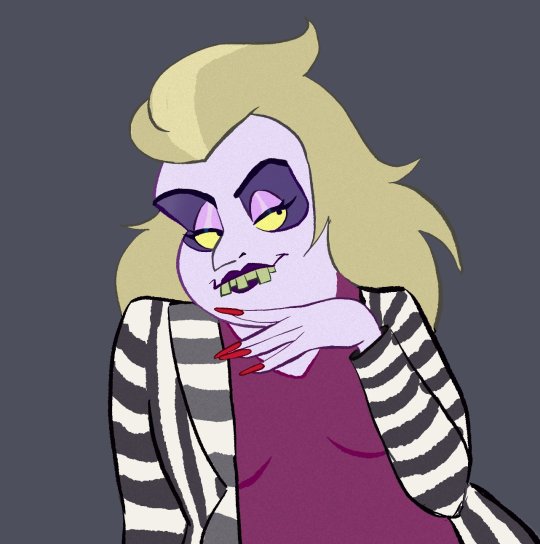
Unexpectedly, I fell in love with this character! And thus began a huge new obsession, and a new line of study! I wanted to learn more about drawing plus size people, wanted to learn about drag so I could make her look more glamorous, wanted to study the cartoon to put her better on-model… I didn’t know it would happen, but she also became my first fictional female crush! Silly thing.
That drawing would become my first profile picture for years… and it was right around the time I was getting on social media too!
Somehow making my subject feminine just let everything click so much more for me… I’ve heard the advice, “Draw what you like”, and if it holds any weight at all—here’s your proof! You’ll learn so much by figuring out what you like to make and then studying how to make it better.
How silly I must sound to write such a long Drabble about her, but I seriously would not have the versatility nor the skill level I have today if not for her! So, my friends: No matter what subject, character, style, or inspiration it is that you want to create… Dive in head first after it and figure out how to celebrate it better and better through the work that you do! It can seem silly to others, but I promise it will pay off.
Thank you so much for asking this question, I’m off to go doodle some more!
12 notes
·
View notes
Note
You have so many unique ways of stylizing you characters! How did you come to developed the very geometric one? Also, how do you decide what art style to use for each work? (Rooting for your recovery. Ganbatte!)
There's quite a long story behind this haha. I injured my wrists in my second year of uni and realised I couldn't continue with how I had been drawing up until that point. I had to have a very hard think about the direction I wanted my art to go, since I wanted to be able to create for as long as possible. So for 6 months I went full research and analysis mode into artists who were making minimalist work. Who was currently successful? What parts of their work did I like? How could I switch to drawing completely differently than what came naturally to me while still feeling creatively fulfilled? So I had all my research, and then I spent the next 6 months trying to test out as many styles and techniques as I could, to see what felt right to me. This was around 2012, from memory? Concurrently to all this, at uni we were given all these little drawing exercises to do, and I remember one of them being 'draw a character in 4 lines'. It was meant to be a gestural exercise, but it really resonated with me, the idea that you didn't need a lot of detail in order to communicate what you wanted. So that morphed into my overall goal: minimal output, maximum message/connection. Then in my third year at uni, we got taught the Point < Line < Shape hierarchy, which is how you can control what your eye is drawn to first. It was meant to be used for creating appealing compositions (e.g. draw a bird, a tree, and a mountain in as many different configurations as you can), but I ended up applying it to my character design, and I've never looked back.
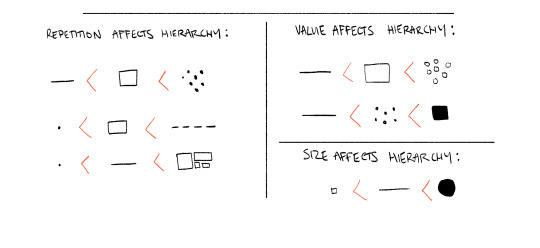
I currently am a freelance animator and designer, and no matter the job, there's always a style that I need to emulate, so a fair chunk of my professional work also bleeds into the art I do in my free time. As for how I decide on which style to go with for what pieces, I don't really have a system for it haha. I use my Likes on all my social media as one giant reference folder, so I just scroll through those until I find a technique, a composition, a shape, a colour palette, etc that I think I would like to try. I'm still in the habit of researching and analysing other people's work constantly, so there's always something new I want to test out for myself. TL;DR I injured my wrists at uni and searched for a way to draw without injuring myself further haha.
21 notes
·
View notes
Text
Study Sunday 19-1-2025
MY LIFE IS IN SHAMBLES GRAGHHHHHHHHH but maaaan i still need to make a living ;-; #1 New Sketching Style just dropped
Brass Beasts
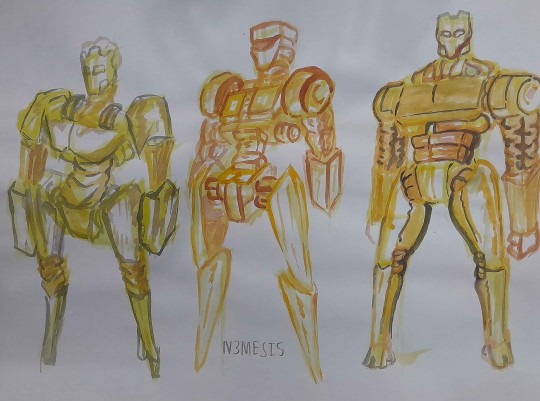
Gaige The Mage Concept Art
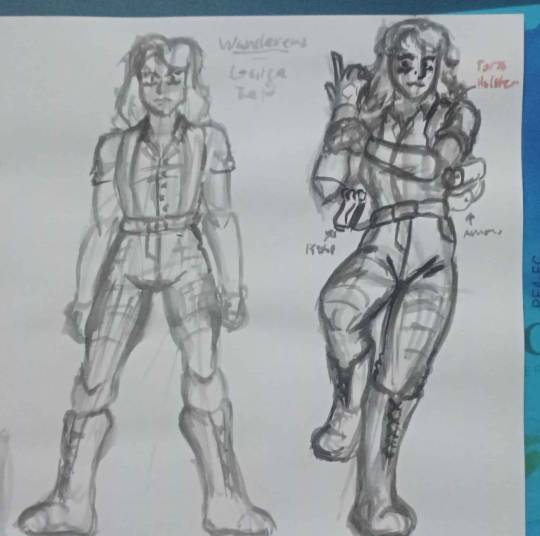
Sketching test (Titanfall, Fallout, Gundamn, Armored Core)
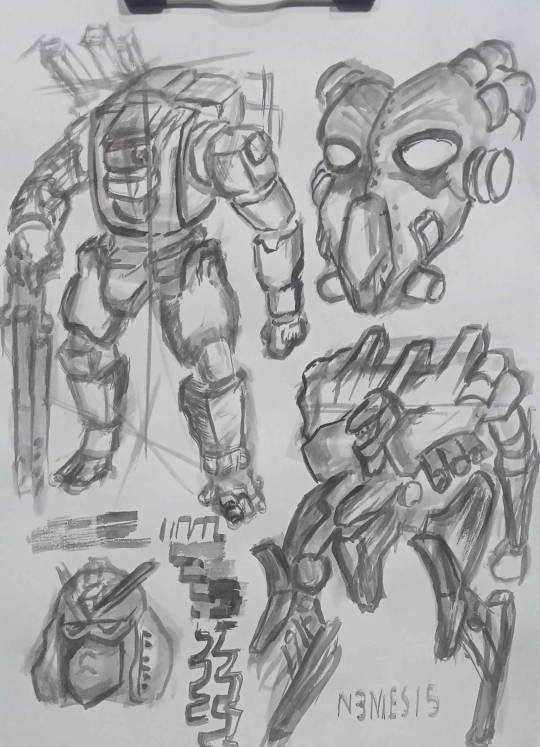
Sketching with pencils is getting pretty boring and depressing for me, I need color, I need somethin' new! so I practiced some dry brushing techniques and oh my lord I am HAVING SO MUCH FUN!!! So this might be the new norm for me, buut it's probably the hardest thing to do so far because i can't erase as much as usual aaand the wetness would warp the paper. But that's ok, it's still fun as hell.
#2 PIXEL ART ANIMATION!!
"Sacrifice" aseprite tech demo (more like my "skill demo"")
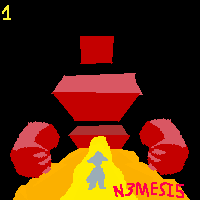
The technique I learned so far is called "warp and clean" which is tilting the sprite and cleaning the mess made from rotating and stretching.
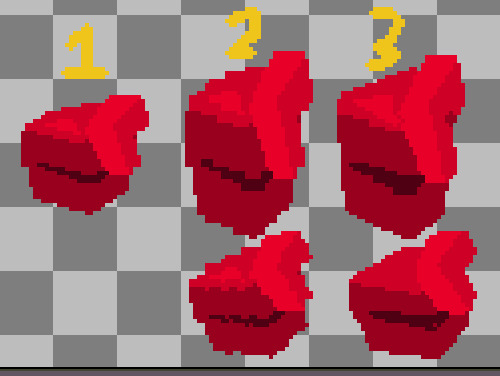
I'm making a cleanup sketch of the giant so far, hopefully I have time to make the protagonist schmoove around. (REALLY WIP)
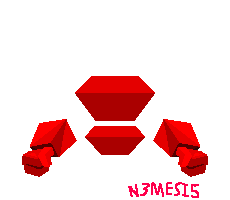
"so I've been active on newgrounds, for quite a while now, engagement is slooow buut the content the site provides is fun, new aaaand sometimes disturbing, thing's still hasn't changed in that site aint it? But here's what I've been making for Pixel Day which is in Jan 23, hopefully I could have some sets of animations before"
Future Plans
Meet The Artist with an all new persona that isn't a seaal!
Art about what socials I have.
Getting back to digital and learn how to render people instead of rocky robot boys.
Pride flag pfp to keep the chuds away.
Closing thoughts
When it comes to improving one's artskills, I think drawing fast and drawing good is a skill you learn through time and browsing references. Though important training we can do early on is probably the technical side like shadows and anatomy. I don't get much engagement on tumblr, except for some few close followers like 12thdoctorkazami or Lucifer (sweetsportsrebelpickle) with their support gives me some energy to keep my account alive here, buut I think I should start making a little list of socials that I possess, which I'll do after I post this study sunday. Thank you for your time reading my little art journal thing~!! Stay cool, stay awesome, champs!!!
2 notes
·
View notes
Text
Hello you jubilant jaguars!
We've finished our final project and have placed all our things on the wall for assessment on Thursday. I didn't have as much to physically present because I didn't have my larger drawings from the first animation brief.
I've very much enjoyed the animation discipline work we've done and the overall process and pacing of the workflow. It was a little bit jarring in the beginning but once you started getting into it, it felt productive and consistent.
Final Brief "Nursery Rhyme"
I have to admit I was a little hesitant with doing group work that is often either really good or really annoying. I was blessed to be in the former of groups.
In the beginning I was a little withdrawn perhaps because my mind was on CCS and the prompt of
Three Blind mice
Epic/Historical
Space Age
wasn't something that sparked many ideas for me. I don't have a great pool of reference for space themed bits of media so I didn't feel super comfortable coming up with ideas. The first day we were supposed to make draft scripts to which I opted to do some research instead of. In the beginning it didn't feel like I was pulling my weight as such but during the weekend we had a call on Sunday to show off our newly written script, of which I did do.



It was my first time writing a script but I was actually really enjoying it towards the middle. I finished after an hour and didn't really revise it because I was occupied with CCS work I needed to get done. There's a couple of things I learned, from the time I spent.
I'm not supposed to write descriptions of shots. (in the beginning)
My dialogue was really long and wordy. (I wanted to get my ideas of characterization across and didn't give myself time to revise and edit it which I would've done usually.
On Monday we finalized the script after taking different aspects of each of our scripts that we liked. From my script they took:
The beginning shots of the space craft showing characterization through visuals.
"Some of the characterization and dialogue ideas such as "is that Russian?"
I spent Monday working on CCS and then on Tuesday my group had storyboard stuff done but I didn't have much of an impact on it besides revising the argument scene between Ridley and Latimer in the buggy. I found myself although not contributing as many new ideas to a discussion but rather looking at the ideas we had and seeing if they fit in with an overall vision. I suggested having an overall theme for the story as it is an Epic and came up with the idea of blind beliefs and the consequences that can lead to.
I knew I had to start pulling my weight for the group and we started doing research. I was put in charge of landscapes as well as spaceships and their interior.


I found the Observing the Moon book to be quite useful for looking at the Apollo missions, reasons for its' discontinuation and the geography of the moon. Moonshine was a Dreamworks background art book that more so served as inspiration and motivation for my future background work.
We put together a google slide consisting of the research we did and these were the ones I made.







We then went onto look at style/aesthetic and once again I felt like I didn't contribute much to this discussion although I was okay with going for the Star trek, Akira hybrid we settled on.
We then started going into concept art. I was put in charge of landscapes and backgrounds along with Mik. I focused on the moon surface and the spaceship interior and exterior. I found this youtube video to be quite useful for getting started as I wasn't too confident in my abilities to make background art.
youtube
I found this process quite fun in keeping loose shapes with wide brushstrokes and practising stroke economy which aims to show great detail and imagery to the viewer with implied detail. I also tried playing with values. It was also my first time really using the gradient tool which add a little interest to the sky as opposed to just a flat colour.



I feel like I could've experimented more with composition but I wanted to get more work done so I took one of the compositions and changed the hue/saturation/brightness to show different colours and palettes to see what type of feel we want for the background. I did try and place the ship in different spots to see how it'd look composition wise but that was the extent of it. I settled on a closer view of the ship for my master shot.

My group liked the bottom three particularly the bottom left purple hue. I then took this and fixed the sky to make it pop more with stars.

I also spent time working on the space ship itself. I sketched them out traditionally based off the video I had in my research to get used to the shape and structure of the exterior and then went to do it digitally/. I quickly sketched out my shapes and then went over them with a paint brush. I didn't do line art and kept it pretty basic.

I think I got the basic look of it down here and once again played with the hues/saturation/brightness to see how it would look differently.
I went over it again but took more time to make it fit the Akira aesthetic more. I used airbrushes, with a lack of line and tried to make it more detailed in spots. In the end I finished it early and was mostly happy with the top half.

Before starting my master shots at home, I wanted to look at other parts of the project for my time in college. I felt like we were lacking some of the civilization development and ideas and started drawing up designs for that.

Basing it off roman architecture with elements of irish stone carvings with the idea of rat/mice imagery and looking at how a language could be formed from this with writing. When it comes to writing I knew the writing would be composed of scratches as if done by mice. The writing I thought would look like symbols not too dissimilar to kanji or Chinese characters but in a more primal less sophisticated form.
I knew the pillars would be the most opportune asset in our storyboard to illustrate a culture or some form of civilization. I played with shapes and tried relating them to Ryan's work so they would feel connected. (Ryan's work below).

I then took these designs and tried making very quick digitized versions but I didn't quite like how they turned out. I also tried seeing how their look in a dark environment being lit with flashlights to the same result.


This was all the concept and design work I was able to get done and I was quite happy with the results. If I gave myself more time to work on this I would've liked to have breached out to other parts of the project such as character work, cave interiors and the city itself. I think it would've been interesting to see what we all would have come up with for each part of the project but with the time we were given I would've liked to have experimented more with composition I think.
After preparing for the pitch presentation I focused on the master shots I was responsible for. I did the exterior of the ship on the moon landscape in the composition I picked out earlier.

Liberty did the sketch for the interior of the ship taking reference from the video I had seen for research.

I went over this in my style to keep it consistent. I found this workflow to be more efficient.

I think a big thing I learned from doing these backgrounds and something to keep in mind for next time is to use darker colours against the light ones to create more contrast and create depth. I feel in some parts of my work certain things don't pop out as much as I would like them to.
We then had our presentation which went well. I wrote down a scripts and practised it multiple times until I felt confident In what I was saying and could talk around it if I forgot any words. I used a Q card to help prompt my sentences with words that I knew I blanked on during my practises written down. I felt my part went smoothly and I remembered my points. I did speak too early for one of my script lines during the animatic but I don't think it that much of an impact.
Coming to the end of this project I learned quite a bit working with my group. I was quite happy with the work I did do and wasn't used to the actual good communication and enthusiasm my group displayed overall. Although I faltered in the beginning, all members in our group felt they had a moment or moments they weren't doing as much. We still covered for each other and always had new work to look at each day. It was really nice to work on something with people who were equally as dedicated to making something together.
If I had to change somethings for next time it would definitely be how much I contributed to new ideas in the group. I did come up with ideas but I felt I kind of took a back seat and looked at the ideas we already had to see if they would fit without coming up with much of an alternative.
I felt also that there were some things I was thinking that I didn't quite vocalise at times but as I grew more comfortable with the group I was more relaxed in sharing my ideas and criticisms.
This might be my last Tumblr post but thank you guys for the support and love you've all given me throughout this journey.
Signing out,
~K00297230
7 notes
·
View notes
Note
The tags you added to your answer are so interesting!! The arch and the vines do frame them very nicely, and its always wonderful to learn how much thought gets put behind a piece like that. Do you always use references when you draw/paint? If you dont mind sharing, id love to hear more abt your process :))
I don't mind sharing at all!
the truth is there is no process. stuff tends to just Happen most of the time. I tend to soak up everything I look at like a sponge and like to watch videoessays about art of any kind that break down certain aspects so I can use the pieces and put them into something new. I love art, be it live action movies or animation, stop motion or a music video, stained glass or architecture of fiber crafts, oil paintings or comic books and so on. when I go places I try to take it all in, I take notes, pictures if necessary, and then vomit it up on paper when the time comes.
it's like 'oh, I like This area in This game because of the ambience' (which resulted in the image in my header), or 'oh the colours in this movie Fuck' and I apply them when they come in handy. it's a bit of a backup library, especially if I know I will be working with that stuff soon (cough cough I may or may not have a lot of images of medieval manuscripts at hand for Reasons)
if I have a more specific idea for a vibe I wanna go for, though, I like looking through reference. I'll be posting a piece (Soon) of my OC and the composition and the overall clutter of it was inspired by the work of Satoshi Kon. my pride art was inspired by local 19th/20th century illustrations of folk motifs. when I worked on my pin-up zine piece, I looked through a lot of antique pinup photography, but I also wanted to tilt the overall vibe to the work of the artist Sakizou so I went through her artbooks. when I still worked on Monarchy Restoration I liked to visit places that fit it time-wise (aka late medieval castles or romantic castles that reimagine the medieval) along with watching old Czech fairytale movies, which were the key inspiration behind the aesthetic of the AU.
honestly I'm a little paranoid at times that if I look up reference of particular styles or techniques, it will show too much in my work and people will call me a fraud lmao. I don't really know why, since a lot of people very openly reference the works of famous artists and it isn't a problem (nor do I mind it when they do it), but a small part of me gets kinda mad when, idk, the houses in the background look too much like those in Cabinet of Doctor Caligari, or something. obviously that doesn't really apply to needing precise anatomy/clothing reference but I tend to put away any reference images the moment I start working on the final product so I'm not replicating someone else's work.
#asks#rebelwithoutabroom#I didn't even mention just the long term influences that just kinda stick with my style at all times#it's kinda hard to give a response to this because every picture is different#recently worked on a fan exchange project and I used no reference save for character and object references#but I can tell that since I've been looking at more ink art (and reading a lot of manga) my inking was influenced by it#or the fairytales collab. I can tell that given that I was looking at artists who had this kinda light application of watercolour#my art has been influenced and Im trying to copy that. because I like how light and airy watercolours feel when used that way#there's also just a lot of Little Tricks that I picked up with time because I saw someone use them and thought it was neat#twisted perspective my beloved
3 notes
·
View notes
Note
what are your thoughts on tracing ? because im fairly new to digital art and i’ve been trying to draw this truck forever now and i cant !! but i cant help but feel that if if i trace its cheating ?? but like also fuck that because art is art but some people can be really mean about it.
I’ll be really transparent with you here and you might not like my answer for that fact.
Firstly, as a beginner (I’ll circle back to this later in my answer) you do whatever you need to do in order to get comfortable with your style and learn. Trace the truck, trace whatever you need to and evolve and adapt as you go, I’m rooting for you newbie.
To answer on a greater scope, I’m very much of the mindset that this place is a stupid little ‘community’ for us to all enjoy no matter what you like or do or don’t do, or to what level. No piece of art created within this fandom space is up for exhibition in the Tate, none of it is up for marking or comparison, etc and should be created however you want to create it. Nothing here is that deep at the end of the day and every single one of us should be here to enjoy the same fictional characters no matter what.
All this being said I will be honest and say, I know for fact one or two artists here trace and make out it’s ‘100% their own’ and some of this stuff is so painfully obvious it’s traced, it makes me wildly confused when the hoards of ‘talent’ comments pour through. I hate this part of me that twists in annoyance because the other half up there ^ wants to throat punch me for it. What pains me about it, I think, is when people will claim one thing to be true when it’s not. They don’t have to make a big show out of it or how/where their materials are coming from, I’m not asking for a dedicated paragraph every time with cited sources and images, just be a bit more honest and transparent about where your shit’s coming from. If that’s AI, amazing, just don’t pass it off as your own. If that’s tracing, nothing wrong with that, just don’t churn out piece after agonising piece and say “I only use references” when it’s eye-wateringly clear that’s not the case. If I see it, I won’t be mean about it, just suffer in silence. And if the topic comes up amongst people I trust I’ll pass my opinion between those safe walls, as I don’t advocate for unwarranted, uninvited public criticism.
I don’t want to discourage anybody from learning to draw digitally through tracing because we all start somewhere. I’m pretty certain I had a sketchbook in the womb with me and have drawn humans/bodies/animals/basically living forms for a long time, but anything else like trees, buildings, furniture, scenery (this fucking car I’m trying to draw for the next piece) I suck at and absolutely despise doing. It bores me, but as a personal choice I won’t turn to tracing because I want my art to be consistent (-ly shit) over suddenly perfect. I don’t think I’m superior for making that choice and am not saying you suck for wanting to trace because honestly, I am constantly oscillating between ‘it ain’t that serious’ and ‘I just wish people would be more honest’.
I’m still going bet you regret fucking asking! Basically I’ll never be a dick about it if I see it or someone tells me, ‘hey I trace!’ Because good for you, give us the good shit, give us the characters and pairings we want in that form and I’ll eat it up just like the rest of us because we’re starved. But yeah, food for future thought maybe.
14 notes
·
View notes
Text
The Comic-Book Aesthetic Comes of Age in “Across the Spider-Verse”
The Spider-Man sequel might be the first superhero film to take full advantage of what comic-book art can achieve onscreen.
— By Stephanie Burt | June 14, 2023
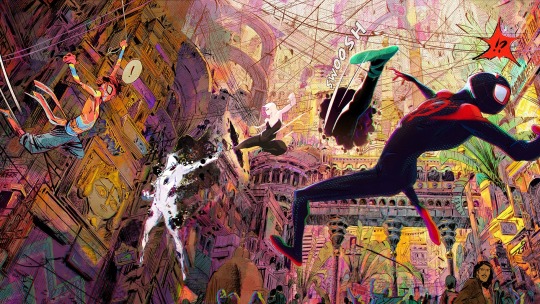
Each of the Spiders in “Spider-Man: Across the Spider-Verse” brings not just an art style but a personality and a backstory.Art work by Aymeric Kevin / Courtesy Sony Pictures
The latest comic-book movie associated with the Marvel Cinematic Universe, “Spider-Man: Across the Spider-Verse,” certainly knows what kind of film it is. Most of the movie follows Miles Morales and Gwen Stacy, two animated teen-aged Spider-People, but, for the sake of the fandom, live actors from live-action blockbusters make surprise cameos. Gwen quips at one point that Doctor Strange—last seen in the M.C.U.’s “Doctor Strange in the Multiverse of Madness”—should not practice medicine. Miles’s high-school roommate references another audience favorite, “Spider-Man: Homecoming” (2017), when he tells Miles, “I’m not your guy in the chair.” Inevitably, there is a meme-inspired scene of Spider-Man pointing at Spider-Man. This is the kind of self-aware fan fodder that, in lesser films, might feel tired.
And yet “Across the Spider-Verse,” which came out on June 2nd, does something that no live-action superhero movie has done before—or can do. It leans hard into, and emulates onscreen, the storytelling devices and the visual flair that make comic books special. Even more than its predecessor, “Into the Spider-Verse” (2018), the film feels designed to show young people, many of whom were raised on superhero movies, why they might care about the comics that launched these characters. It does this so well that, at a time when some Marvel movies haven’t been doing so hot at the box office, “Across the Spider-Verse” has already raked in nearly four hundred million dollars. At 7 p.m. on a Wednesday night, with local schools still in session, my seventh grader and I found most of the seats in our suburban multiplex full.
The first scene in the movie reintroduces us to Miles’s long-distance best friend, Gwen Stacy of Earth-65, a.k.a. Spider-Gwen (voiced by Hailee Steinfeld). Her world looks painterly, as if rendered by brushes and pastels; she often appears in Expressionist shades of blue and pink. That’s how the rest of the film will roll: each Spider-Man, Spider-Woman, or Spider-Villain, and each new Earth on which they live, has its own eye-popping art style. Miles (voiced by Shameik Moore), a Black Puerto Rican physics star who draws in all his notebooks, inhabits a world that evokes hip-hop album covers and graffiti. Miguel O’Hara, or Spider-Man 2099, comes with clean lines, techno details, and RoboCop vibes. Spider-Byte appears as a glowing avatar like the nineteen-eighties film “Tron.” Pavitr Prabhakar, a.k.a. Spider-Man India, swings through his home city of Mumbattan, all tropical colors and curvy architecture. (When characters move between dimensions, they pass through a portal made of hexagons—a basic geometric unit of Hollywood animation.)
Almost all of these characters existed in comic books before they hit the screen, and, crucially, all of them have what the scholar Hillary Chute identifies as the core property of comics: they look like somebody chose to draw them. They bear the mark of their creators’ hands. The Spot, a villain who sets the movie’s main plot in motion, looks like a blank page splattered with ink; each of his splotches opens up a little wormhole, in the same way that the pen stroke of a comic can open up another world. The animators of the film owe a lot to Marvel’s comic artists: the credits thank a “Black Panther” illustrator, Brian Stelfreeze; a co-creator of Miguel O’Hara, Rick Leonardi; and the nineteen-eighties titan Bill Sienkiewicz. All three have contributed to the making of “Across the Spider-Verse.”
The film’s version of Miguel O’Hara (voiced by Oscar Isaac) behaves like a stern, bad Spider-Dad. He resolves to stop Miles from disrupting something called a Canon Event—a plot development so important that it has to happen in every parallel world, lest the entire universe be at risk. “You break enough canons,” Miguel warns, “and we could lose everything.” He sounds almost like a Marvel Comics editor, telling writers that they can’t go too far. (One writer, Grant Morrison, called their longest project at Marvel “more like a prison than a playground.”) In the tradition of print comics, the film offers explanatory notes in 2-D colored boxes; some of them, in an homage to the comics of the nineteen-seventies, are even signed “--Ed.,” for editor.
Like all the best teen superhero comics, “Across the Spider-Verse” hints, or more than hints, at real-life dual identities. The colors that tend to accompany Gwen, blue and pink, are the colors of the transgender flag. A poster in her bedroom says “protect trans kids,” and her father, a police officer who initially has no idea that she is Spider-Gwen, sports a trans-flag pin on his uniform. Gwen tells Miles that her parents “only know half of who I am.” She also wears her hair in an asymmetrical undercut—which, my seventh grader told me, is often a sign of trans or nonbinary identity among Gen Z. (It should not be confused with a half-and-half, my seventh grader added.)
Miles and Gwen both have well-intentioned cops for dads, who try hard but can’t seem to stop enforcing rules. In one scene, Miles tells his father, “Men of your generation ignore their mental health too long.” In part for this reason, Miles and Gwen feel the kind of solidarity that young people can share only with one another. When they finally get some tender alone time above a twilit Brooklyn, Gwen asks Miles, “How many people can you talk to about this stuff?” He tells her, “You don’t even know.” That’s what happens when trans people meet one another, too—something that the Internet pointed out right away. (This isn’t the sole Spider-Man film to be interpreted as an L.G.B.T.Q.+ allegory; some viewers saw Tom Holland’s Spidey as transmasculine, too.)
“Across the Spider-Verse” is a sequel, but it’s arguably the first superhero film to take such full advantage of what comic-book art can achieve. At the Guggenheim Museum, Gwen has to fight a version of an old Spidey villain, the Vulture, who looks, in her words, like a “big flying turkey from the Renaissance.” He’s drawn in the style of ink on parchment, with the scratchy, busy lines you’d expect from a goose-quill pen. He’s not just from another Earth but from a different artistic universe. Elsewhere, several Spider-People chase Miles across the body of a rocket and up what appears to be a space elevator. Theoretically, C.G.I. could help live actors imitate some of these stunts—but not in such colors, and not with such dynamism and glee. In another sequence, Miles races a moving subway train while he fights a pangolin-esque villain, who rolls up in an armored ball. In a live-action film, the scene would cost a ton and still look cheesy. With animation this artful, it’s all part of the fun.
Comics are at their core a visual medium. “Everyone’s first response to your work will be to the visual aspect,” Brian Michael Bendis, the co-creator of Miles Morales, wrote, in his 2014 book about creating comics, “Words for Pictures.” In a comic, the script has to serve the art, which in turn has to serve the characters. And this script does. Each of the Spiders brings not just an art style but a personality and a backstory: tragedy for Miguel, teen heartbreak for Gwen, dad jokes for Peter B. Parker, that lovable sad sack from “Into the Spider-Verse.” (There’s even a Spider-Baby.) Each character and each gadget—one is called a Go-Home Machine—says something about generational change. Today’s kids may feel that they can’t live up to adult expectations and still be themselves. Where, if anywhere, can they find heroes?
Maybe Gen Z could find them in superhero comics, but it’s not clear that they’re reading many. The best-selling U.S. single-issue comic book of all time remains “X-Men No. 1,” published in 1991, which moved more than eight million units; in the past ten years, the best-selling superhero comics have tallied half a million instead. “The captive audiences of the pandemic era are out doing other things,” the comics journalist Heidi MacDonald wrote this year. When Zoomers read comics, it’s often via online platforms such as Tapas and Webtoon, which span genres from high fantasy to romance, or else in all-ages, slice-of-life graphic novels. (“Guts,” by Raina Telgemeier, was America’s most-purchased book—not comic book, book—one week in September, 2019.) “Across the Spider-Verse” could help to boost printed comics. Marvel has leaned hard on movies to promote Spider- titles, including the made-for-mobile online comic “Spider-Verse Unlimited.” Viewers who want to read stories that look like the Spider-Verse might also check out recent issues of “New Mutants,” by Vita Ayala and Rod Reis, in which feelings are more important than fisticuffs, and the expressive art fits the strong emotions.
“Across the Spider-Verse” is full of astonishing action, but a quiet scene midway through, when Miles and Gwen finally get a moment together above Brooklyn, might be the most affecting in the film. It lets viewers—including my rapt seventh grader—contemplate what young people want from one another, what they can never get from adults. Perhaps it’s a budding romance. Perhaps it’s trans bonding. These moments set up the conflict that comes later, when Miguel O’Hara tells Miles what he must do for the multiverse, and Miles, facing a superhero-level trolley problem, just says no. And the whole thing takes place, beautifully, with Brooklyn inverted: Miles and Gwen, using their tenderness, and also their powers, conduct the whole conversation upside down. ♦
7 notes
·
View notes
Text
process thoughts
new piece new stuff to explore!! this was my first completed work with multiple characters, dynamic poses, flats and shading (no highlights yet… might add soon) and it took about 10h according to procreate. I love drawing adventure time stuff as a trial, the style simplifies down everything so I can manage it even at a beginner level.
figure practice and gesture drawing is paying off! I have more confidence now in drawing poses even though I still struggle a lot with them, I think I can’t go without reference yet but I’m enjoying how it comes to me a little easier when I have a scaffolding of how to draw bodies.
one big win was the lineart! I’ve always struggled with it, the same issue as all beginners I think, that the sketch can look not bad but the lineart looks wonky af. with this piece I learned that lineart can take multiple layers of sketching to do right, plus the importance of thick and thin lines where they should be. it’s pretty insane how long lineart can take for me, I hope it gets easier…
the background clouds don’t look how I wanted them to, I was going for a more anime burst through the clouds thing where the clouds circle/lead away from the point of Finn’s leg, but as you can see I didn’t do perspective on them so that’s a little difficult. still really proud of this though!!
I know I should keep practicing figure drawing and start to clean it up and make neater sketches maybe with shading, but I’m wondering if I should start working on faces and portraiture. also backgrounds :( i FUCJING love background art but it’s on a totally different time scale honestly like that shit takes days for me and I feel like every step needs another day

stakes squad!
32 notes
·
View notes
Text
race & culture in fandom
For the past decade, English language fanwriting culture post the days of LiveJournal and Strikethrough has been hugely shaped by a handful of megafandoms that exploded across AO3 and tumblr – I’m talking Supernatural, Teen Wolf, Dr Who, the MCU, Harry Potter, Star Wars, BBC Sherlock – which have all been overwhelmingly white. I don’t mean in terms of the fans themselves, although whiteness also figures prominently in said fandoms: I mean that the source materials themselves feature very few POC, and the ones who are there tended to be done dirty by the creators.
Periodically, this has led POC in fandom to point out, extremely reasonably, that even where non-white characters do get central roles in various media properties, they’re often overlooked by fandom at large, such that the popular focus stays primarily on the white characters. Sometimes this happened (it was argued) because the POC characters were secondary to begin with and as such attracted less fan devotion (although this has never stopped fandoms from picking a random white gremlin from the background cast and elevating them to the status of Fave); at other times, however, there has been a clear trend of sidelining POC leads in favour of white alternatives (as per Finn, Poe and Rose Tico being edged out in Star Wars shipping by Hux, Kylo and Rey). I mention this, not to demonize individuals whose preferred ships happen to involve white characters, but to point out the collective impact these trends can have on POC in fandom spaces: it’s not bad to ship what you ship, but that doesn’t mean there’s no utility in analysing what’s popular and why through a racial lens.
All this being so, it feels increasingly salient that fanwriting culture as exists right now developed under the influence and in the shadow of these white-dominated fandoms – specifically, the taboo against criticizing or critiquing fics for any reason. Certainly, there’s a hell of a lot of value to Don’t Like, Don’t Read as a general policy, especially when it comes to the darker, kinkier side of ficwriting, and whether the context is professional or recreational, offering someone direct, unsolicited feedback on their writing style is a dick move. But on the flipside, the anti-criticism culture in fanwriting has consistently worked against fans of colour who speak out about racist tropes, fan ignorance and hurtful portrayals of living cultures. Voicing anything negative about works created for free is seen as violating a core rule of ficwriting culture – but as that culture has been foundationally shaped by white fandoms, white characters and, overwhelmingly, white ideas about what’s allowed and what isn’t, we ought to consider that all critical contexts are not created equal.
Right now, the rise of C-drama (and K-drama, and J-drama) fandoms is seeing a surge of white creators – myself included – writing fics for fandoms in which no white people exist, and where the cultural context which informs the canon is different to western norms. Which isn’t to say that no popular fandoms focused on POC have existed before now – K-pop RPF and anime fandoms, for example, have been big for a while. But with the success of The Untamed, more western fans are investing in stories whose plots, references, characterization and settings are so fundamentally rooted in real Chinese history and living Chinese culture that it’s not really possible to write around it. And yet, inevitably, too many in fandom are trying to do just that, treating respect for Chinese culture or an attempt to understand it as optional extras – because surely, fandom shouldn’t feel like work. If you’re writing something for free, on your own time, for your own pleasure, why should anyone else get to demand that you research the subject matter first?
Because it matters, is the short answer. Because race and culture are not made-up things like lightsabers and werewolves that you can alter, mock or misunderstand without the risk of hurting or marginalizing actual real people – and because, quite frankly, we already know that fandom is capable of drawing lines in the sand where it chooses. When Brony culture first reared its head (hah), the online fandom for My Little Pony – which, like the other fandoms we’re discussing here, is overwhelmingly female – was initially welcoming. It felt like progress, that so many straight men could identify with such a feminine show; a potential sign that maybe, we were finally leaving the era of mainstream hypermasculine fandom bullshit behind, at least in this one arena. And then, in pretty much the blink of an eye, things got overwhelmingly bad. Artists drawing hardcorn porn didn’t tag their works as adult, leading to those images flooding the public search results for a children’s show. Women were edged out of their own spaces. Bronies got aggressive, posting harsh, ugly criticism of artists whose gijinka interpretations of the Mane Six as humans were deemed insufficiently fuckable.
The resulting fandom conflict was deeply unpleasant, but in the end, the verdict was laid down loud and clear: if you cannot comport yourself like a decent fucking person – if your base mode of engagement within a fandom is to coopt it from the original audience and declare it newly cool only because you’re into it now; if you do not, at the very least, attempt to understand and respect the original context so as to engage appropriately (in this case, by acknowledging that the media you’re consuming was foundational to many women who were there before you and is still consumed by minors, and tagging your goddamn porn) – then the rest of fandom will treat you like a social biohazard, and rightly so.
Here’s the thing, fellow white people: when it comes to C-drama fandoms and other non-white, non-western properties? We are the Bronies.
Not, I hasten to add, in terms of toxic fuckery – though if we don’t get our collective shit together, I’m not taking that darkest timeline off the table. What I mean is that, by virtue of the whiteminding which, both consciously and unconsciously, has shaped current fan culture, particularly in terms of ficwriting conventions, we’re collectively acting as though we’re the primary audience for narratives that weren’t actually made with us in mind, being hostile dicks to Chinese and Chinese diaspora fans when they take the time to point out what we’re getting wrong. We’re bristling because we’ve conceived of ficwriting as a place wherein No Criticism Occurs without questioning how this culture, while valuable in some respects, also serves to uphold, excuse and perpetuate microaggresions and other forms of racism, lashing out or falling back on passive aggression when POC, quite understandably, talk about how they’re sick and tired of our bullshit.
An analogy: one of the most helpful and important tags on AO3 is the one for homophobia, not just because it allows readers to brace for or opt out of reading content they might find distressing, but because it lets the reader know that the writer knows what homophobia is, and is employing it deliberately. When this concept is tagged, I – like many others – often feel more able to read about it than I do when it crops up in untagged works of commercial fiction, film or TV, because I don’t have to worry that the author thinks what they’re depicting is okay. I can say definitively, “yes, the author knows this is messed up, but has elected to tell a messed up story, a fact that will be obvious to anyone who reads this,” instead of worrying that someone will see a fucked up story blind and think “oh, I guess that’s fine.” The contextual framing matters, is the point – which is why it’s so jarring and unpleasant on those rare occasions when I do stumble on a fic whose author has legitimately mistaken homophobic microaggressions for cute banter. This is why, in a ficwriting culture that otherwise aggressively dislikes criticism, the request to tag for a certain thing – while still sometimes fraught – is generally permitted: it helps everyone to have a good time and to curate their fan experience appropriately.
But when white and/or western fans fail to educate ourselves about race, culture and the history of other countries and proceed to deploy that ignorance in our writing, we’re not tagging for racism as a thing we’ve explored deliberately; we’re just being ignorant at best and hateful at worst, which means fans of colour don’t know to avoid or brace for the content of those works until they get hit in the face with microaggresions and/or outright racism. Instead, the burden is placed on them to navigate a minefield not of their creation: which fans can be trusted to write respectfully? Who, if they make an error, will listen and apologise if the error is explained? Who, if lived experience, personal translations or cultural insights are shared, can be counted on to acknowledge those contributions rather than taking sole credit? Too often, fans of colour are being made to feel like guests in their own house, while white fans act like a tone-policing HOA.
Point being: fandom and ficwriting cultures as they currently exist badly need to confront the implicit acceptance of racism and cultural bias that underlies a lot of community rules about engagement and criticism, and that needs to start with white and western fans. We don’t want to be the new Bronies, guys. We need to do better.
#race#racism#c-drama#fandom#fan wank#fandom wank#microaggresions#culture#the untamed#bronies#whiteness#ficwriting#fanwriting#cultural bias#discourse
6K notes
·
View notes